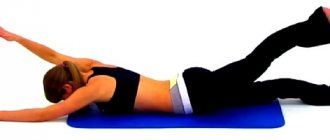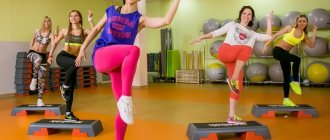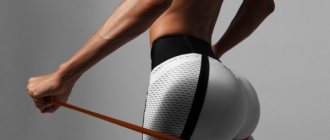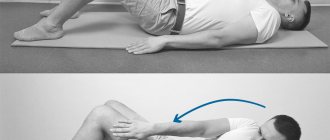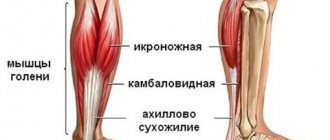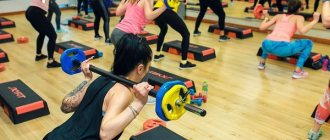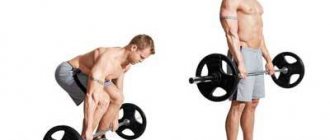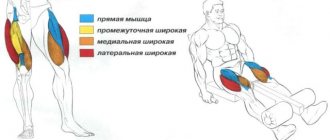The essence of the program for beginners
The tasks of beginners who first cross the threshold of the gym are similar. Guys want to improve, become better, have a healthy and attractive appearance.
In more detail, the essence of any training program for beginners is:
- development of general training ability - the body's endurance during training, the ability to quickly recover after exercise;
- improving muscle coordination, training exercise techniques;
- increasing efficiency - increasing the volume of the program;
- increasing strength indicators.
As the novice athlete achieves these goals, he approaches others - gaining muscle mass, burning fat, improving overall health.
How to write a program correctly
The most effective training program will be one based on the individual characteristics of the beginner.
When selecting exercises for a beginning athlete, it is necessary to take into account 3 main factors:
- Age. This factor determines the list of acceptable exercises. For example, it is better for a 16-year-old teenager to refrain from performing heavy deadlifts.
- Health status. A person suffering from varicose veins should reduce the load on their legs.
- Regime and lifestyle. When creating a program for an office manager and a loader at a factory, different approaches are needed.
Training schedule
The training program for a beginning athlete looks something like this:
| Day of the week | Week #1 | Week #2 |
| Monday | A | B |
| Tuesday | rest | rest |
| Wednesday | B | A |
| Thursday | rest | rest |
| Friday | A | B |
| Weekend | rest | rest |
Training takes place on Monday, Wednesday and Friday - three times a week. The two types of training alternate every other time. This schedule of training in the gym is the most optimal: the muscles are well pumped during the workout and have time to recover after the load.
Video: Day 2
The purpose of the training program for beginners:
- Correctly learn and work out the exercise technique.
- Get into the rhythm of the training process.
- Strengthen the entire muscle corset.
The emphasis of the program is on large muscle groups: back, chest, legs, shoulders.
!For beginners who want to lose excess weight! add 20 minutes of cardio exercise on the machine at the end of the workout.
Notes on the training program for beginners:
- — training time about 1 hour (without cardio);
- — rest approximately: between exercises 2 minutes, between approaches 1 minute (if legs 1.5-2 minutes);
- — for the first 2-3 classes we work in a light mode: we select a light weight. We train all muscle groups not to failure!
What muscles can you train in one workout?
Here is the most common and logical option:
| Monday | Back, biceps |
| Wednesday | Chest, triceps |
| Friday | Legs, shoulders |
The main muscle groups are distributed by day. To each large group, small muscle groups are added that take part in the main training (excluding training of the shoulders and legs). It's simple: let's take chest training, which includes exercises based on pushing (squeezing) weight away from the chest. This function is performed by the triceps, which should be trained together with the pectoral muscles.
We adhere to the same principle when planning a back and biceps workout. The shoulders are not involved in pumping the legs, but Friday is the most convenient day to ensure a high-quality load on the deltoids.
The above program should not be taken as a postulate and there is an alternative plan for training muscle groups. As follows:
| Monday | Chest, biceps |
| Wednesday | Back, triceps |
| Friday | Legs, shoulders |
This option is less popular. Its supporters consider it pointless to train a secondary muscle after it has already been involved in working out the main muscle groups. Therefore, biceps and triceps have moved in the table.
The third and no less effective training option for beginners: working out all the main muscle groups in one workout. This plan is the most energy-intensive and is not suitable for everyone.
Where to start training
The beginning of any workout involves a warm-up.
A cardio machine is perfect for these purposes. Beginners should prefer an exercise bike. Cardio warm-up usually takes 5-10 minutes.
Then move on to swings, body turns, and pull-ups to the sides. Everyone remembers this warm-up from their school days: we start with the neck, then the shoulder joint, elbow, and wrist.
It is especially worth paying attention to the lower back - this area of the body bears the main load during the training process. Bend to the sides, bend back, stretch to the side, do crunches, rotate your torso. We finish the warm-up - rotate our hips, work our knees and feet.
First day
ORDER training for a beginner
Cardio + warm-up 10 minutes
| MUSCLES and EXERCISES | SETS | REPEATS |
| 1 . Press (upper). Incline crunches | 3 | 15 |
| 2 . Lower back (lower back). Hyperextension | 3 | 15 |
| 3 . Chest (top). Chest press in the machine | 3 | 15 |
| 4 . Back (width). Upper block rows in front of you | 2 | 20 |
| 5 . Shoulders (middle delta). Shoulder press | 3 | 15 |
| 6 . Legs (quadriceps). Leg straightening | 4 | 15 |
| 7 . Legs (femoral biceps). Lying leg curls | 4 | 15 |
Stretching for 5-10 minutes.
Training program for beginners
The above programs can serve as an excellent guide for a novice athlete. However, before starting classes, it is necessary to adjust the material based on individual characteristics (age, health, lifestyle, etc.).
Split training program for beginners
A three-day split for a beginner might look like this:
| Monday (back muscles, biceps) | |
| Warm-up | 5-10 minutes |
| Deadlift | 2 sets of 8 times |
| Bent-over barbell row | 3 sets to the maximum |
| Biceps curl (with barbell) | 2 sets of 12 times |
| Abs workout | 3 sets to the maximum |
| Stretching | 5 minutes |
| Wednesday (pectoral muscles, triceps) | |
| Warm-up | 5-10 minutes |
| Bench press with wide arms | 5 sets of 5 times |
| Bench press with narrow arm position | 2 sets of 12 times |
| French press | 3 sets of 12 times |
| Abs workout | 3 failure sets |
| Friday (legs and shoulders) | |
| Squats | 3 sets of 6 times |
| Leg press in the simulator | 2 sets of 18 reps |
| Seated calf raise | 3 sets of 15 times |
| Dumbbell raises | 2 sets of 12 times |
| Army press | 3 sets of 8 times |
| Stretching | 5 minutes |
After Friday, the body needs rest for 2 days. This type of training can be continued for several months, over time becoming familiar with the new principles of training.
Circuit training with machines for beginners
Circuit training in the gym is the best option for a beginner. Among the obvious advantages of such activities:
- the ability to master exercises from the point of view of the technicality of their implementation;
- gradual adjustment of mental-muscular coordination;
- high-quality preparation of muscles for more significant loads.
For girls, I recommend reading the article “Circuit training for girls.”
With this type of training, the fitness trainer usually adheres to the “big to small” principle. However, if you believe in practice, not every beginner has enough energy and physical endurance to work out other muscle groups after heavy exercises on the lower part.
The most favorable option for circuit training for a beginning athlete is as follows:
- After a five-minute warm-up, we completely perform the first exercise on the back muscles (in 2-3 sets of 12-15 repetitions). Having completed one set, we rest. Then we proceed to chest exercises (2-3 sets of 12-15 repetitions). Then we move on to the shoulders and continue according to the same principle. This way you can train for the first two weeks.
- With the beginning of the third week, we add one more exercise for the main muscle groups (back, chest). Then we continue to adhere to the same principle: after performing 2 exercises on the back muscles (in 2-3 sets), we begin working on the chest. We don’t rush with the legs: we leave one previous exercise (squat or bench press). The same applies to small muscles - we perform one exercise each for biceps, triceps and shoulders.
Cardio workout for beginners
For a beginner athlete, during cardio training, it is important to perform a block of exercises that would allow evenly loading all areas of the body. This goal is perfectly achieved by doing aerobics and dancing. In the process of performing a specific element, you should maintain tension in those muscle groups that are currently tense - this will increase the effectiveness of the exercises.
A cardio training complex for a beginner may include the following exercises:
- Run in place. We grab our hips with our heels.
- Jumping (legs spread/closed). You can also use your hands, simulating the rotation of a jump rope.
- "Jumping jack" - wide jumps. At the same time we raise our hands.
- Running with high hips.
- "Mill".
- Leg-scissor jumps. We jump up and change legs in a forward and backward direction. We press our hands to the body.
- "Pendulum". The body is vertical to the floor, hands are pressed to the shoulders, one of the legs is supporting, the other is moved to the side. Alternately change the emphasis on the leg.
- Feet together, jump to the sides.
- Let's box.
- We squat deeply, our back is straight, we throw our arms out in front of us.
A beginner should give preference to such cardio training during the first two months. After this, you can connect running in the fresh air, running on sports simulators, cycling, exercise bike, jumping rope, etc.
A few more important tips
Do not neglect warming up under any circumstances – it should take at least 10 minutes. The muscles should warm up, blood circulation should be activated, the ligamentous apparatus should be developed, and the nervous system should be toned. Otherwise, the risk of injury increases dramatically.
Start each exercise with a warm-up set of 10 repetitions with 50% of the working weight.
Try to keep your heart rate between 100-140 beats - this is the optimal level of stress. If your pulse is faster, reduce the intensity of the workout; if it is less frequent, increase it.
Each set should take between 30 and 60 seconds. This will give you the optimal work rate for strength training.
Exercises should include 3 sets of 10-15 repetitions, because the task of a beginner is not so much muscle growth as preparing the muscles for real loads and increasing their endurance.
At the end of your workout, be sure to do a cool-down - a series of exercises that stretch the muscles and prepare the body for the transition to a state of rest.
And in conclusion, here is an example of a typical program for beginners.
1 day
Warm-up
Deadlift – 2 sets of 8 reps
Pull-ups – 3 sets with maximum reps
Barbell Curls – 2 sets of 12 reps
Abdominal exercise – 3 sets with maximum reps
Hitch
Day 2
Warm-up
Barbell Squats – 3 sets of 6 reps
Leg press – 2 sets of 18 reps
Seated calf raises – 3 sets of 15 reps
Abdominal exercise – 3 sets with maximum reps
Hitch
How to Make a Workout Program Work
To achieve this goal, a beginner should adhere to the following rules during training:
- We focus on the form of execution. First, we determine our working weight, which will allow us to perform the exercise in the proper form (technically). After confidently completing the entire volume of exercises, you can move on to a gradual progression of working weights.
- We perform all the sets and progress in loads. We are talking about volume-strength progress, which involves a consistent increase in load while maintaining the technique and numerical parameter of the exercise.
- We follow the plan and don’t experiment.
By following these three principles in the gym, a beginner can rightly count on good athletic results.
Do you need a coach?
If it were not for the issue of price, most beginners would end up training in a gym with a personal trainer. There are several reasons for this and they are quite objective:
- training with a trainer gives beginners confidence. After all, many beginning athletes are shy, suffer from complexes, and experience a feeling of fear;
- the coach helps the beginner avoid unpleasant situations. Injury in the gym can be caused by an incorrect assessment of one’s own strength, violation of the technique of performing an exercise, and inability to use exercise equipment and equipment;
- The trainer is able to create an individual training program for the client. At the same time, the professional takes into account the beginner’s current level of physical fitness, his goals, wishes, and body characteristics;
- the coach, observing the client from the side, can point out to the novice athlete a mistake, teach the correct technique or make the necessary amendments to the program;
- according to statistics, with a coach, a beginner achieves good, sometimes excellent results much faster;
- a coach motivates a beginning athlete, sets him up for training, supports him, and prepares him for future success.
However, to answer the question “Do I need a coach?” Each aspiring athlete must independently weigh the pros and cons, take into account his recent relationship with the sport and evaluate his own internal state.
The following training programs for beginner athletes can serve as decent models when creating an individual program. The choice of exercises, number of repetitions, sets and pace of exercise are selected taking into account the individual characteristics of the body.
Regardless of the type of training and training regimen, it is important not to be guided by three basic principles aimed at mastering technique, progressing in working weights, following a plan and not experimenting. Such an approach will not only prevent the development of unpleasant situations, but also ensure the achievement of the set goal, no matter how unattainable it may seem.
Training program: Option 1
Before I talk about the workouts, let me warn you in advance that they will probably seem strange to many of you. You may think that they are too easy, simple or even basic.
If you think so, then it is quite obvious that those training programs for beginners that you have seen before are no good.
How do I know? Because the workout options I'll show you have proven to be the most suitable (and most often recommended) for beginners, whatever their goal.
Even if you didn't think so and even if what you saw before is very different - trust me. This works best for beginners. All the research, real world experience, and expert advice supports some form of what you're about to see.
These are the workouts.
Workout "A"
Workout "B"
|
As you can see, these are the most basic and important exercises, designed to provide ideal training balance, sufficient frequency and recovery, all included in a low volume workout.
They are GREAT for beginners and will provide fast progress and the best results in your strength training.
Now a few words to answer any questions you might have.
Details and explanations for training “A”:
- Workout “A” includes: a quad-focused leg exercise (squats), a horizontal press (bench press), and a horizontal row.
- It is preferable to do squats, but if necessary, you can replace them with leg presses.
- For the bench press, it is recommended to use a barbell, but dumbbells will also work. Perform the exercise with a spotter whenever possible or necessary.
- To perform deadlifts, choose any exercise you want: bent-over barbell or dumbbell rows, low pulley rows, or chest-supported machine rows.
Details and explanations for training “B”:
- Workout B includes: hip-focused leg exercises (deadlifts), vertical rows (pull-ups, lat pulldowns), and vertical presses (overhead presses).
- For deadlifts, the classic version is recommended for beginners, but if necessary, you can perform the Romanian deadlift (with straight legs).
- If you can't do pull-ups yet, replace them with cable rows or some form of assisted pull-up.
- Perform the overhead press while seated, with dumbbells or a barbell, whatever you like.
Now let's see how this all works.
First of all, focus on the technique of performing the exercises
It is generally recommended that beginners spend the first few weeks of training learning how to properly perform strength exercises. I advise you to do the same.
Don't think about anything else during these first weeks. Just choose a light weight for each exercise (more here: How Much Weight Should You Lift?) and focus on doing them correctly.
Learning proper technique at this stage of your training is very important, so make sure you do everything correctly.
After these weeks, when you feel like you're doing everything correctly, it's time to focus on continuous training progress, while not forgetting to monitor your technique. Let me explain what I mean.
Sets, reps, weight and progress
You should use the same weight for each set of each exercise.
For example, you have learned the correct bench press technique and determined that 20 kg is the most suitable weight for you in this exercise. You should now use this weight for all 3 sets.
Later, when you can correctly perform 8-10 reps for 3 sets with a weight of 20 kg, the next time you perform a bench press, you should increase the working weight by the least amount possible (usually 2 kg).
You should then aim to perform the same number of sets and reps with this increased weight. When you can do this, the next time you perform the exercise, add about 2 kg again and continue to repeat this process over and over again.
All of the above applies to each exercise. You use the same weight for all 3 sets, ensure proper form , achieve your goal, and then add the least amount of weight possible each time.
As a beginner, you have to move forward consistently for quite a long time, partly because you start to master the technique with light weights, and partly because beginners are more able to progress at a steady rate than anyone else.
Make sure this is exactly what you do. The more you progress in your training, the slower your progress will be. Take advantage of it while you can.
Once again, I want to remind you that the weight you start with should feel a little lighter than it should, and not vice versa.
To ensure the fastest and most consistent progress, the weight you start with should be slightly lighter than what you are able to lift.
Do not try to change the compiled program!
When you look at this training program for beginners, remember that the goal for a beginner is NOT to try to "explode" muscles with all kinds of exercises, do various advanced isolation exercises with huge weights, and other things that a beginner should not do.
As I said earlier, the main goal for beginners (besides perfecting the technique of all exercises) is to take advantage of the extreme strength they all possess within a short period of time, which allows them to progress FASTER in every way than average lifters do. or advanced levels.
Beginners gain mass faster, get stronger, tone up, burn fat, and generally progress FASTER than anyone else.
However, in order for a beginner to take advantage of this “super power” and all its benefits, you need to follow a specific training program. This means high repetition frequency, lower volume, and a small set of compound exercises.
Our program fully meets these requirements, like any other well-designed program for beginners.
Therefore, please, beginners, do not try to do something more complex and supplement the above program with something. If you want quick results, follow it exactly, focus on doing the exercises correctly and making consistent progress.

